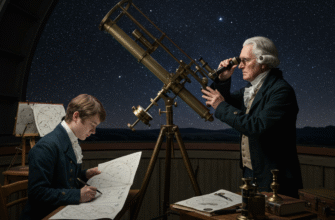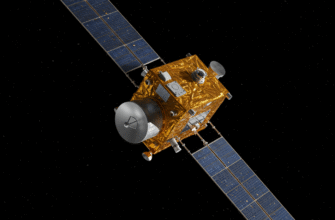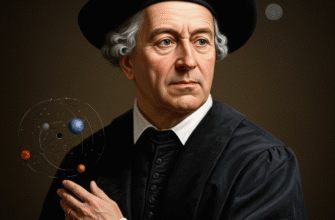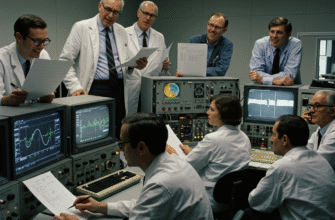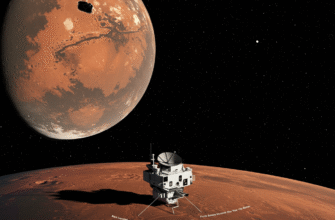Gazing up at the night sky, humanity has always yearned to see more, to peer deeper into the cosmic expanse. For centuries, the primary tool for this quest has been the telescope. Yet, even as telescopes grew larger and more sophisticated, a fundamental barrier remained: Earth’s own atmosphere. This turbulent blanket of air, essential for life, acts like a shimmering, distorting lens, blurring the light from distant stars and galaxies, much like looking at objects through the hot air rising from a summer road. For ground-based observatories, this atmospheric interference, along with the inherent challenges of crafting and maintaining giant, perfectly shaped mirrors, long stood as the principal obstacles to achieving truly sharp images. The dream of crystal-clear cosmic views from Earth seemed perpetually just out of reach, until the ingenious development of active and adaptive optics.
Tackling the Giants: The Rise of Active Optics
Building ever-larger telescopes presented immense engineering hurdles. A primary mirror, the heart of a reflecting telescope, needs to maintain a precise shape to focus light accurately. As mirrors grew to several meters in diameter to collect more faint light, their sheer weight became a problem. Gravity would pull and distort them, no matter how carefully they were supported. Temperature fluctuations throughout the night would also cause the mirror material to expand or contract, subtly altering its carefully polished curve. These were relatively slow-acting disturbances, but significant enough to degrade image quality substantially.
This is where active optics stepped onto the scene in the latter half of the 20th century. Active optics is a technology designed to correct these large-scale, slowly changing deformations in a telescope’s primary mirror. It’s not about fighting the atmosphere directly, but about ensuring the telescope’s main mirror is always in its optimal shape. Think of it as giving the telescope the ability to constantly fine-tune its own eyesight against internal and environmental pressures.
How does it work? Beneath the main mirror, a system of actuators – small, computer-controlled mechanical supports – is installed. These actuators can exert tiny pushes and pulls on the back of the mirror. Sensors periodically analyze a reference star’s image (or use other optical tests) to detect any deviations from the ideal mirror shape. This information is fed to a control system, which then instructs the actuators to make the necessary adjustments. These corrections happen relatively infrequently, perhaps every few minutes or even less often, because the distortions they address (like gravitational sag or thermal expansion) evolve slowly. The European Southern Observatory’s (ESO) New Technology Telescope (NTT), inaugurated in 1989, was a trailblazer, demonstrating the power of active optics and paving the way for the massive mirrors of today’s leading observatories.
Active optics systems are fundamental to the operation of most modern large telescopes. They ensure the primary mirror maintains its precise shape against gravity and temperature changes. This technology was a crucial step towards building the enormous telescopes we see today. Without active optics, the current generation of 8-10 meter class telescopes would not be able to achieve their designed performance.
The success of active optics meant that astronomers could confidently design and build telescopes with much larger, thinner, and therefore lighter, primary mirrors than previously thought possible. This was a revolution in itself, but the shimmering atmosphere remained a formidable foe.
Dancing with Starlight: The Advent of Adaptive Optics
While active optics masterfully handled the slow, ponderous deformations of large mirrors, it couldn’t do much about the rapid, chaotic twinkling of stars caused by atmospheric turbulence. This turbulence occurs in pockets of air with slightly different temperatures and densities, zipping across the telescope’s line of sight. These pockets act like tiny, shifting lenses, bending the incoming starlight in unpredictable ways hundreds of times per second. The result is a blurred, dancing image, a far cry from the pinpoint sharpness needed to resolve fine details of distant celestial objects.
Enter adaptive optics (AO), a far more dynamic and fast-acting technology specifically designed to counteract these atmospheric distortions in real-time. If active optics is about keeping the telescope’s structure perfect, adaptive optics is about actively canceling out the atmosphere’s mischief. It’s like giving the telescope incredibly fast reflexes to anticipate and correct for the atmospheric blur before it ruins the image.
The Wavefront Sensor: Seeing the Distortion
The first crucial component of an AO system is the wavefront sensor. Its job is to measure exactly how the atmosphere is distorting the incoming light. Light from a star, before it hits the atmosphere, travels in relatively flat sheets called wavefronts. As these wavefronts pass through turbulent air, they get wrinkled and warped. The wavefront sensor, typically a device like a Shack-Hartmann sensor, samples a portion of this distorted light. It divides the light into many small sub-apertures and measures the local tilt or shape of the wavefront in each. By analyzing all these measurements, the system can build a map of the overall distortion introduced by the atmosphere at that precise moment.
To do this, the wavefront sensor needs a reasonably bright reference source. Often, a relatively nearby, bright natural guide star (NGS) within the telescope’s field of view is used. However, suitable natural guide stars aren’t available for every patch of sky astronomers want to observe. To overcome this limitation, many AO systems now employ laser guide stars (LGS). A powerful laser is beamed up into the sky, exciting sodium atoms in a layer about 90 kilometers high in the mesosphere. These excited atoms glow, creating an artificial star that can be used by the wavefront sensor. This dramatically increases the portion of the sky accessible to AO correction.
The Deformable Mirror: The Shape-Shifter
Once the wavefront sensor has ‘seen’ the distortion, the next step is to correct it. This is the role of the deformable mirror (DM). This is usually a smaller mirror placed in the telescope’s light path after the main mirror but before the science camera. The DM has a highly reflective surface that can be very rapidly changed in shape. Its surface is controlled by a dense array of tiny actuators on its back – sometimes hundreds or even thousands of them. These actuators can push or pull on the mirror’s surface by microscopic amounts, deforming it into a shape that is precisely the opposite of the distortion measured by the wavefront sensor. If the atmosphere has added a ‘bump’ to the wavefront, the DM creates a ‘dip’ to cancel it out, and vice-versa. This effectively flattens the wrinkled wavefront, restoring the light to its near-pristine state.
The Control System: The Brains of the Operation
The final piece of the puzzle is the real-time control system, essentially a powerful computer. It takes the rapid-fire measurements from the wavefront sensor, performs complex calculations to determine the necessary corrective shape for the DM, and then sends commands to the DM’s actuators. All of this has to happen incredibly fast – hundreds or even thousands of times per second – because the atmospheric turbulence itself changes that quickly. It’s a continuous, high-speed loop: measure, calculate, correct, repeat. The sophistication of these control systems, capable of performing such demanding tasks with minimal delay, is a testament to advances in computing power and algorithm design.
Active vs. Adaptive: A Tale of Two Corrections
It’s important to distinguish clearly between active and adaptive optics, as they address different problems on different timescales, though they often work hand-in-hand on modern telescopes.
- Active Optics:
- Corrects: Large-scale, slow-changing errors in the telescope’s primary mirror shape due to gravity, temperature, or structural stress.
- Timescale: Corrections made relatively infrequently (e.g., every few seconds to minutes).
- Mechanism: Actuators adjust the main telescope mirror itself.
- Goal: Ensures the telescope optics are intrinsically perfect.
- Adaptive Optics:
- Corrects: Small-scale, rapidly changing atmospheric distortions (seeing).
- Timescale: Corrections made very frequently (hundreds to thousands of times per second).
- Mechanism: A dedicated, smaller deformable mirror rapidly changes shape.
- Goal: Cancels out the blurring effect of Earth’s atmosphere.
Think of it this way: active optics ensures your eyeglasses have the correct prescription, while adaptive optics is like having an incredibly fast system that counters the shimmering heat waves rising from a road, allowing you to see clearly through them. Most large, modern telescopes use both. Active optics provides a stable, perfectly shaped primary mirror, and then the adaptive optics system takes over to deal with the atmospheric turbulence.
The Impact: A Sharper Universe
The development and implementation of active and, particularly, adaptive optics have been nothing short of revolutionary for ground-based astronomy. The clarity achieved can rival, and in some specific wavelengths or conditions even exceed, that of space telescopes like Hubble, but for much larger primary mirrors capable of collecting more light. This has opened up new windows on the universe.
Astronomers can now:
- Image fine details on planets within our solar system.
- Resolve individual stars in crowded star clusters and distant galaxies.
- Study the environments around supermassive black holes at the centers of galaxies, including our own Milky Way.
- Directly image exoplanets – planets orbiting other stars – a task that is incredibly challenging due to the overwhelming glare of the host star. AO helps to concentrate the starlight into a much tighter point, making it easier to spot faint nearby companions.
- Perform more precise spectroscopy, as the concentrated light from a target object can be more efficiently fed into spectrographs to analyze its chemical composition, temperature, and motion.
The sharper images mean that fainter objects can be detected and studied, and details that were previously smeared out by atmospheric blurring can now be clearly discerned. This has led to countless discoveries and a much deeper understanding of a wide range of astronomical phenomena.
The Future is Bright (and Incredibly Sharp)
The journey of active and adaptive optics is far from over. Researchers are continually pushing the boundaries to achieve even better performance and overcome existing limitations. Extreme adaptive optics (ExAO) systems are being developed and deployed, aiming for even higher levels of correction, specifically for the demanding task of directly imaging and characterizing Earth-like exoplanets. These systems use very dense actuator deformable mirrors and sophisticated control algorithms.
Another exciting frontier is multi-conjugate adaptive optics (MCAO). Standard AO systems correct for turbulence in a relatively small patch of sky. MCAO aims to significantly widen this corrected field of view by using multiple deformable mirrors optically conjugated to different altitudes in the atmosphere, along with multiple guide stars (often lasers) to sense the turbulence in three dimensions. This will allow for sharp images over much larger areas, greatly increasing survey efficiency.
These advanced AO systems are absolutely crucial for the next generation of Extremely Large Telescopes (ELTs), with primary mirrors ranging from 20 to nearly 40 meters in diameter. Without highly effective AO, the enormous light-gathering power of these giants would be severely compromised by atmospheric blurring. Indeed, these telescopes are being designed with AO integrated into their very fabric from the outset.
While challenges remain, such as improving the brightness and efficiency of laser guide stars, developing more robust control algorithms, and manufacturing even more sophisticated deformable mirrors, the future of ground-based astronomy, sharpened by the ever-evolving eyes of active and adaptive optics, looks incredibly promising. The quest for the clearest possible view of the cosmos continues, driven by human ingenuity and an insatiable curiosity about our universe.


